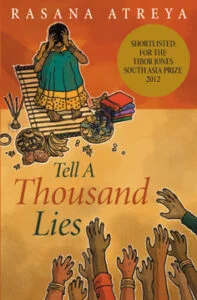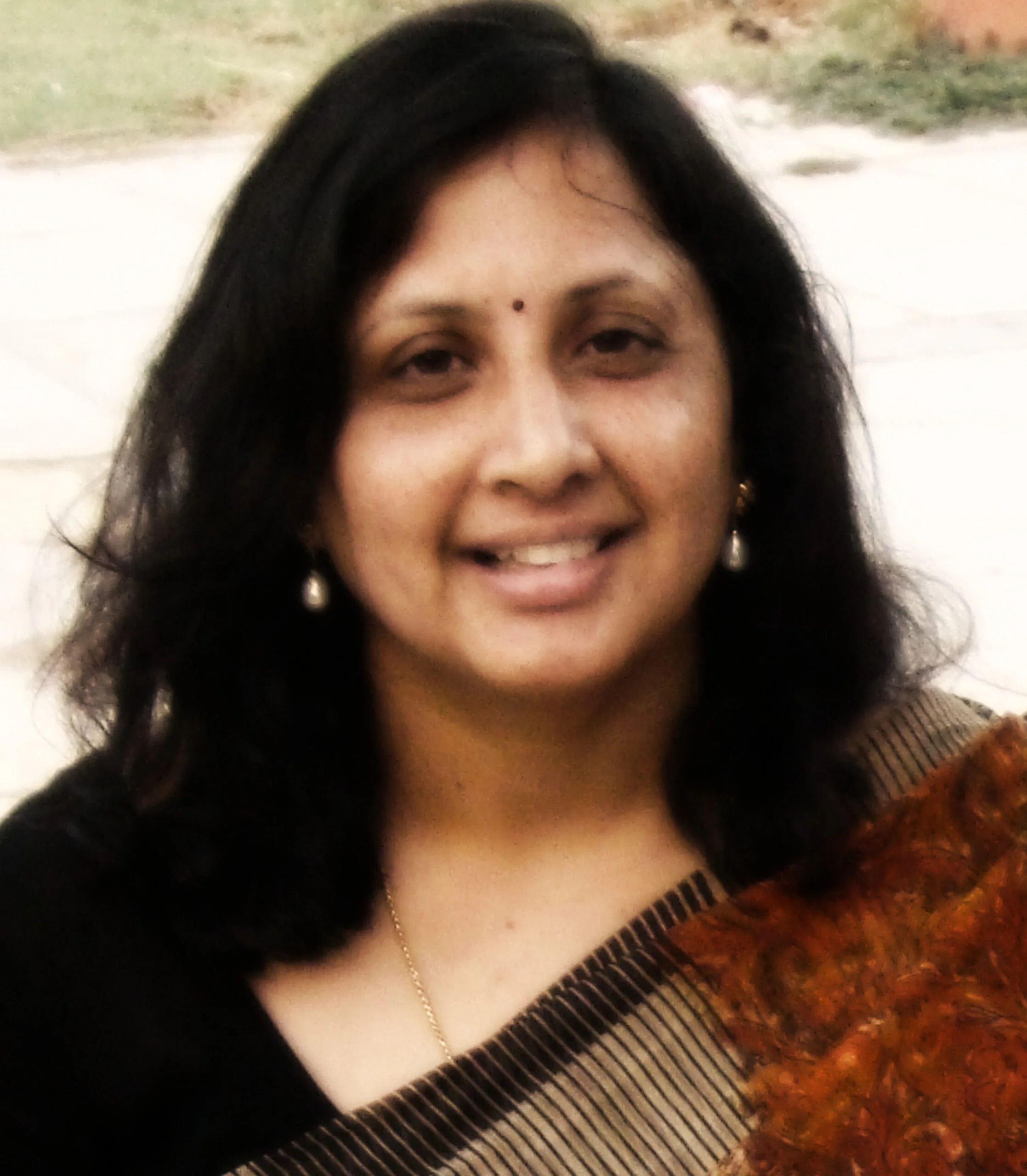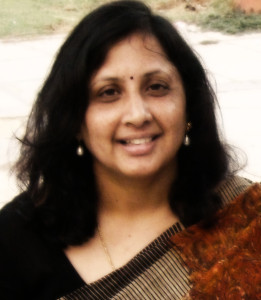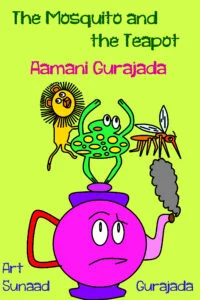Indian author Rasana Atreya provides invaluable insight into the current state of self-publishing in India, and shares her views on opportunities and constraints for indie authors in her home country.
On February 16, Amazon hosted a self-publishing event in New Delhi, India – Amazon for Authors: Navigating the Road to Self-Publishing Success. Three KDP authors were invited, of which I was one. The session was moderated by Jon Fine, Director of Author and Publishing Relations, Amazon. This post is both a direct response to that event, as well as my thoughts on the publishing scene in India.
Jon Fine (JF) started off the formal session by showing the audience a video clip from the BEA (Book Expo America). Five indie authors were interviewed about self-publishing, including ALLi's founder, Orna Ross.
Misconceptions About Self-Publishing
The session continued with an introduction of the various imprints of Amazon Publishing (Encore, Crossing etc). Since this was a session on self-publishing with Amazon, I wondered about this.
It turned out that many in the audience didn’t realize that there was more to Amazon than self-publishing. Over dinner, I found myself repeating to various members of the audience that while Amazon Publishing does acquire books for its imprints using a formal submission process, this is completely separate from its self-publishing division. Many authors expressed confusion regarding self-publishing, and what vanity publishers tout as self-publishing.
Amazon's Challenges For Indian Authors

Rasana Atreya's best-selling self-published novel, published on AmaSpecial Challenges For Indian Authors
Prior to the session for the public, JF met with me and the two other KDP authors in a lively session in which we covered a lot of ground.
- I asked about integrating reviews so that all reviews across the various Amazon portals and Goodreads, the reader review site (which Amazon owns), show up everywhere collectively. I have over 300 reviews for Tell A Thousand Lies, but you couldn't tell if you were to go to Amazon.in because it only displays reviews written by customers of Amazon India. JF said Amazon fears falling foul of various country-specific free speech laws. I’m no lawyer (unlike JF) but this didn't make sense to me because, while reviews across the various Amazon portals might not be visible globally, Goodread reviews certainly are.
- I queried why Amazon offers only 35% royalties to authors on Amazon portals in India, Brazil and Japan unless the author goes exclusive with Amazon via KDP's ‘Select' program; the rest of the world continues at the 70% option even without ‘Select.' Setting aside the perceived unfairness, this be perceived as a problem for reasons discussed below.
- I also brought to JF's attention that having Amazon.in as the only portal for other countries in the Indian subcontinet (Pakistan, Bangladesh, Sri Lanka, possibly Nepal and Burma) might cause readers from those countries to look for local vendors for reasons of national pride. This is already happening in many parts of the world. New Zealanders prefer not to buy from Amazon Australia, many French-speaking countries do not want to be directed to France. JF acknowledged this was an issue, but not something Amazon can control. No matter how many portals they open, there will still be countries who'd be directed to another country's site.
- I raised the issue of international surcharge – this is an additional charge levied by Amazon on those not buying from their designated Amazon portal, or for those travelling. This surcharge is pretty stiff. JF was unaware of this, and promised to look into it.
I was glad to be invited to the Amazon session and I’m rooting for them because what’s been good for them has been good for authors, thus far. But there are significant concerns, so I present to you my take on the Indian publishing scene.
My Take on the Indian Publishing Scene
India, as a market, cannot be ignored by Amazon or any other ebook retailer, simply because we're so big: we have around 150 million English speakers. While I'm excited that Amazon is taking India seriously, the market, as it stands, is fragmented.
- Last I heard Flipkart was in merger talks with Myntra, a fashion retailer giant. An Amazon executive at the Delhi event mentioned that that particular deal has fallen through. Perhaps. But the fact that they were even discussing merger, to me, was significant.
- Smashwords has inked a deal with Flipkart, so Smashwords e-books are now available in India.
- Then there's Google Play and Rockstand, ebook mobile app maker.
E-Readers Insignificant in India
Dedicated e-book readers have not really taken off in India. All the reasons that account for their popularity in the West don't apply here:
- The younger (under 40) set prefer tablets and smartphones.
- The 40+ set in the West has adopted e-readers because of the ability to increase font size to a comfortable reading level, in India a lot of readers in that age range are reading in Indian languages.
- Indian language books are not available as ebooks, so obviously, there is no incentive to buy an e-reader.
Having said that, Apple products (iPads/iPhones) are very popular in India (despite there being no India iBook store), as are Android tablets. In my opinion Amazon would sell more e-books not on their e-readers, but via cool/hip e-book apps. Rockstand has a headstart here. Kindle Fire, being a tablet, could possibly do better.
I've already mentioned the fragmented market in India. Since Amazon entered India less than a year ago, they are still building up a customer base (remember, Flipart already has an established presence). If Amazon doesn't make it attractive for authors to remain exclusive with them by offering 70% royalties, like they do worldwide, authors are not going to have any incentive to sign up for ‘Select’.
Local Book Pricing Issues
Which brings me to another India-specific issue. Books in India have to be priced lower; you simply cannot price in US dollars and expect to sell here – the exchange rate does not make it viable. In order to compete locally, self-published authors are forced to lower the price of the book.
- Now, even if Amazon were to reconsider their non-Select royalty option for India (and raise it to 70%), ‘Select' still requires that the book be priced in the $2.99-9.99 range in order to get that 70%. $2.99, at today's exchange rate, is Rs. 184.90. While this might be a reasonable price for a print book, it is not competitive in a market where ebooks are priced Rs. 99 or lower: another disincentive for authors to sign up for KDP Select. I did ask JF about this, and he said – how many traditional publishers offer you even 35%? But that's not the point, is it?
- CreateSpace, though based in the US, is available for use by the rest of the world. For print book sales in the US this works great, but shipping charges can add up if ordered from another country. This includes discounted copies available to the author. In response to my comment JF said UK-based authors often bring this problem up, especially the huge transatlantic shipping costs they incur even when they're ordering discounted author copies.
- This is a bigger problem in India because of the unfavourable exchange rates. From the reader's perspective, the books are priced in dollars, which make it very expensive for them; shipping costs from the US only add to this. For the author, also, it does not work out in terms of the pricing – despite the discounted rate for author copies, the exchange rate prices up the book. Add to that the shipping charges, and you have a horrendously priced book. JF's answer to this was to use local printers. For India, one solution would be to use pothi.com.
Which Books Sell Best In India?
This brings me to the final question in this post, this from a fellow indie writer – what kind of books sell in India? From my own experience – anything that sells in any other part of the world. Romance has always been huge, as have mysteries and thrillers, and spiritual books.







Hi Rasana,
Thanks a nice and informative article.
Can you please answer my query?
I would like to self-publish the Indian edition of a textbook in paperback which I recently published on KDP to bring its cost down?
Thank you and best regards.
Sudipta
Hi
Can you please guide me how I can publish my ebbook on Amazon india
Thanks
Nice posting about The Self-Publishing Market in India….
MICROMAX & YU TELEVENTURES India’s first 100% pure frauds company. I request to anybody PLZ DO NOT PURCHASE MICROMAX & YU TELEVENTURES COMPANY PRODUCTS.
DHEERENDRA SHARMA
+919829075137,,,,,,
Bekaree is my biography publishin1999iwonpublisher.
MICROMAX & YU TELEVENTURES India’s first 100% pure frauds company. I request to anybody PLZ DO NOT PURCHASE MICROMAX & YU TELEVENTURES COMPANY PRODUCTS.
DHEERENDRA SHARMA
+919829075137
100 % PURE FRAUD & 100% PURE CHEATED & 100%PURE LOSER & 100% PURE THIRD CLASS PRODUCT “”MICROMAX & YU TELEVENTURE…..
Hi Rasana,
I am new to self-publishing. I want to publish with createspace and want my book to be available for kindle and google reads. Mine will be a paperback. Will publishing through createspace make it available for amazon.in and flipkart, if I use the $10 ISBN?
Your article was published in Feb 2014. I hope the publishing world, esp. for the Indian authors, has evolved since then. Please help me understand.
Hi Rasana
Great information. However, can you throw some light on the market of Hindi fiction books in India?
Dear All,
Greetings from Manipal Digitals Systems Pvt Ltd.!
This email is to briefly introduce the services offered by MDS for the kind perusal to outsource E-Publishing services including data Conversion, ePub creation (epub2/epub3 reflow and fixed layouts, comic and mobi), XML development and typesetting services.
MDS, established with a goal of providing superior service to our customers & to assist them in achieving their goals. We offer the highest quality of ePublishing services in the market today.
Currently we are providing conversion & ePublishing services to the much known companies in this arena and would like to expand our services & expertise though “your esteemed company”. Accordingly, I would like to have an opportunity to serve you in the area of ePublishing services i.e. any format to PDF, ePub, XML conversions and Data processing.
We will be delighted if a sample work will be given to us at your earliest convenience. This provides us a chance to prove our demonstrated skill & strengths in the ePublishing arena.
We would like to thank you for the time that you have taken in order to go through this email. We look forward to your favorable consideration. Should you have any questions and/or concerns, please feel free to contact me directly. You can reach me at +91 9008517063.
Best regards,
Jayanth Talalwar
Rasana, Very informative article. I want to set US price of my book at $2.99 at 70% royalty. In that case, my book in India will be Rs 190 where as the price of print edition is Rs 150. In india , I want to price my book as less than Rs 100. It does not give the option to set the price for India separately. Any suggestions pls?
Hi Rasana,
I’ve been looking into self-publishing in India lately, and just came across your article. I am actually interested in print books and was wondering if you can recommend any self-publishing platforms in India for print books?
Dear Rasana mam,
Thank you so much for this nice informative article. I was also present in that Amazon function, held in New Delhi. In fact i talked to you as well. But here, I came to know that Amazon is paying 70% only on KDP select. Means it is like a contract which prohibit us to go on other e selling site? If it is so, how long it is for and what are its restrictions?
And above all, what is this US tax id and how to get it? It is very confusing process to get my account connected with Amazon to get the royalty.
Hope you will find out time to reply me.
Thanks
Mani
though some authors are indian and they are publishing selling their ebooks only in india, then why amazon puts on such authors to be binded by U.S. laws since indians do not know much about the U.S.Laws.
Usha, I’m hoping ebooks do catch up with printbooks in India. Good for authors, good for readers, too!
Hi Rasana,
Great article.
I want to point out that there is a huge misconception that one needs an ereader to read an ebook. Ebooks can be read on any device, computers, laptops, tablets and phones, provided an app has been downloaded onto the device. Most ereader apps are free, and can be downloaded in minutes. The Kindle app especially, is tailored for all devices.
I have read ebooks on all devices, even on my phone. I think once people stop linking ereader to ebook and realize they already have access to ereaders if they own a digital device, that is when ebook sales will begin to catch on.
Right now there is a complete mismatch. Readers in India dont have access to a huge range of books available in the international market and have to wait for printed editions, while reader sabroad have very limited access to books being published in India. Ebook adoption will enhance availability and bring about open access – it is the future and the sooner people begin to realize it and move in that direction, the better.
Founder Indireads
This is an excellent point, Naheed, and I should have thought to mention it. Thanks for making it.
Hi Rasana,
Great article.
I want to point out that there is a huge misconception that one needs an ereader to read an ebook. Ebooks can be read on any device, computers, laptops, tablets and phones, provided an app has been downloaded onto the device. Most ereader apps are free, and can be downloaded in minutes. The Kindle app especially, is tailored for all devices.
I have read ebooks on all devices, even on my phone. I think once people stop linking ereader to ebook and realize they already have access to ereaders if they a digital device, that is when ebook sales will begin to catch on.
Right now there is a complete mismatch. Readers in India dont have access to a huge range of books available in the international market and have to wait for printed editions, while reader sabroad have very limited access to books being published in India. Ebook adoption will enhance availability and bring about open access – it is the future and the sooner people begin to realize it and move in that direction, the better.
Founder Indireads
Hi Rasana,
Great article.
I want to point out that there is a huge misconception that one needs an ereader to read an ebook. Ebooks can be read on any device, computers, laptops, tablets and phones, provided an app has been downloaded onto the device. Most ereader apps are free, and can be downloaded in minutes. The Kindle app especially, is tailored for all devices.
I have read ebooks on all devices, even on my phone. I think once people stop linking ereader to ebook and realize they already have access to ereaders if they a digital device, that is when ebook sales will begin to catch on.
Right now there is a complete mismatch. Readers in India dont have access to a huge range of books available in the international market and have to wait for printed editions, while reader sabroad have very limited access to books being published in India. Ebook adoption will enhance availability and bring about open access – it is the future and the sooner people begin to realize it and move in that direction, the better.
Founder Indireads
Good point which is often overlooked Naheed! I really hope eBooks pick up and offer a viable alternative to authors as well. Sooooon!
I am Krishna Jadhav bekaree is my biography
After my thriller came out a few months back, I discovered how many books in English are being written by Indian authors. The readers span from seven to seventy years – yes, kids today are precocious and we need to be vigilant about what they lay their hands on! Self publishing still seems to be regarded as vanity publishing. Ebooks have not really made an impact. I’m hoping all this vibrancy is good for readers and authors and that Amazon will take a relook at the options available here. Thank you Rasana, for being a trailblazer!
Thank you Rasana. You’re really doing great service to self-published authors.
Thank you, Neelesh!
Nice post Rasana! I agree with you that e-readers in India appeal only to the innovators till now because of their high price. The situation might reach a tipping point soon, though. The day text-books and reference books will start appearing in epub/mobi formats on tablets and ebook readers, the sales of such devices and books will take off. I live in Chennai and while traveling around I frequently come across many youths carrying Kindles. Maybe they are avid book readers. Hope they start a new revolution.
Thanks for this update.
At today’s rate, US$1 works out to Rs. 61.75. That’s pretty expensive. The British pound is even worse, at Rs. Rs. 103.26.
Excellent article Rasana. I think, KDP allows authors to sell their books for a lower price in India with the 70% royalty (as long as they are in KDP select), than the strict $2.99 x 60 RS, thing. I was able to set lower price for my book, with 70% royalty. But, the compulsory KDP select enrollment is a hinderance, which I hope Amazon will withdraw eventually.
On eReaders, I feel Amazon is not promoting Kindle in India – people are aware only about Kindle Fire (mostly). However, I feel eInk Kindle is a better option than tablet (just my experience).
I’m sorry I should have made that clear – the 70% option is available, but with Select. But the market is so fragmented that it isn’t making sense to go exclusive with Amazon till sales pick up. And there’s that other issue – if the book is not priced in the $2.99-9.99 range, you’re not eligible for that 70%. But, like I mentioned above, $2.99 is approximately Rs. 185, which is a reasonable price for a printbook, but not for an ebook.
That is correct – Amazon should give 70% royalties for books priced between $0.99 to $2.99 also. It makes a lot of sense in the Indian market.
Terrific article, thanks for the added insight. Most of my books are nonfiction pet titles and I’ve actually had a few sales in India. But the exchange rate is an eye opener.
Oops, my reply to your comment ended up below. My apologies.
Outstanding article! I honestly had no idea about the exchange rate problem. That could very well be why most of us make hardly any sales in India. I’m pretty sure many are oblivious to this fact.
I find it bizarre that JF did not know about the added expense to an international purchase. I mean, wow. That’s been happening for a very long time. I live in Greece, so I very rarely buy eBooks for that very reason. (I have a Kindle from the US) A book priced at 0.99 USD will cost me close to 4 USD. Then I think, I might as well just buy the paperback for and extra couple of bucks,
Again, thanks for all this information!
You’re welcome!
Great post, Rasana! I’ve been wondering about the Indian market and this offers lots of good information. You mentioned that the under-40 audience in India are more likely to use tablets and phones than e-readers. Do you happen to know if they are using them to read books. I know here there are apps that allow you to access the digital books you’ve purchased, but are they perhaps not yet widely available in India, or maybe reading digitally just hasn’t caught on yet, there?
Hi Kathryn,
Yes, they are, but only to some extent. I don’t have hard numbers, unfortunately. Apps are *very* popular in India. Another popular app that I neglected to mention is the Wattpad app for cell phones.
A fascinating view of a huge market not currently being served as well as it might be.
I have always been fond of India, and have followed some of its struggles in the modern world with great interest. It will be very interesting to see if, when I publish, Indian readers might be interested in my stories.
I believe you can set your prices in different countries with POD extended distribution from places like Smashwords – it sounds as if the lower price that works well in India could be offset by volume.
Thanks for your informative post.
Yes, Alicia, I’m hoping that the lower price will be offset by volume, 70% royalties would help, too.